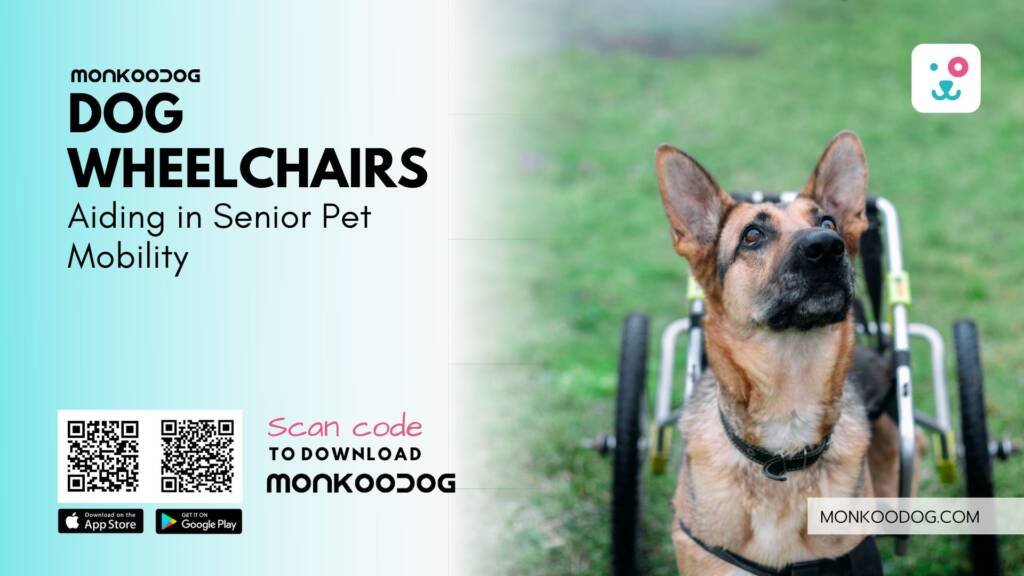Aging is a natural process that affects all living beings, and our beloved pets are no exception. As dogs grow older, they may experience various health issues that can hinder their mobility. One of the most effective solutions for senior dogs struggling with mobility is the use of dog wheelchairs. This comprehensive guide will explore how and when dog wheelchairs aid in senior pet mobility, the benefits they provide, the types available, and how to choose the right one for your furry companion.
Understanding Senior Dog Mobility Issues
As dogs age, they can face several mobility issues due to arthritis, hip dysplasia, spinal cord problems, or general muscle weakness. Arthritis is one of the most common conditions, causing inflammation in the joints and leading to pain and stiffness. Hip dysplasia, a genetic condition, results in the malformation of the hip joint, making movement painful and difficult. Spinal cord problems, such as intervertebral disc disease, can lead to partial or complete paralysis. These issues can severely impact a dog’s quality of life, making simple tasks like walking, standing, or playing challenging and indoor exercise for senior dogs is must recommended.
Early signs of mobility problems in senior dogs include reluctance to move, difficulty getting up, limping, and decreased activity levels. Recognising these signs early and consulting with a veterinarian can help in diagnosing the underlying condition and determining the appropriate intervention, such as the use of a dog wheelchair.
How Dog Wheelchairs Work

Dog wheelchairs are designed to support pets with hind leg or full-body mobility issues. They consist of a lightweight frame, usually made of aluminium or stainless steel, with adjustable harnesses and wheels. The frame supports the dog’s weight, while the wheels allow them to move around with ease. For dogs with hind leg weakness, the wheelchair supports the rear end, enabling them to use their front legs for movement. For dogs with full-body paralysis, the wheelchair provides support for both the front and rear legs.
When a dog is fitted with a wheelchair, it allows them to regain their mobility and independence. They can participate in daily activities, such as walking, playing, and exploring their environment, which significantly improves their overall quality of life. The use of a reputable manufacturer like K9 Carts ensures that the wheelchair is of high quality, providing the necessary support and comfort for your pet.
Benefits of Dog Wheelchairs for Senior Pets
Dog wheelchairs offer numerous benefits for senior pets, enhancing their mobility and overall well-being. Firstly, they provide physical support, alleviating pressure on painful joints and muscles. This support reduces pain and discomfort, allowing dogs to move more freely. Additionally, increased mobility helps in maintaining muscle mass and preventing further atrophy, which is crucial for overall health.
Secondly, dog wheelchairs boost mental health. Dogs are naturally active and curious animals. When mobility is restricted, it can lead to frustration, anxiety, and depression. By restoring their ability to move, wheelchairs help in maintaining a positive mental state. Dogs can interact with their environment and other pets, which is essential for their mental stimulation and happiness.
Thirdly, dog wheelchairs enhance the bond between pets and their owners. Elderly dog care with mobility issues can be challenging and emotionally taxing. Seeing their beloved pet struggle can be heartbreaking for owners. Providing a solution that significantly improves the pet’s quality of life brings immense joy and relief to both the pet and the owner.
Also read: Nutrition and Supplementation Tips for Senior Dogs
Types of Dog Wheelchairs

There are several types of dog wheelchairs available, each designed to cater to specific mobility needs. The most common types include:
Rear Support Wheelchairs:
These are designed for dogs with hind leg weakness or paralysis. The wheelchair supports the dog’s rear end, allowing them to use their front legs for movement. This type is suitable for dogs with conditions like arthritis, hip dysplasia, or post-surgical recovery.
Full Support Wheelchairs:
Also known as quad wheelchairs, these provide support for all four legs. They are ideal for dogs with severe mobility issues affecting both the front and rear legs, such as spinal cord injuries or degenerative diseases.
Custom Wheelchairs:
For dogs with unique needs or body structures, custom wheelchairs can be made. These are tailored to fit the dog’s specific measurements and requirements, ensuring optimal comfort and support.
Choosing the right type of wheelchair depends on the dog’s specific condition and mobility needs. Consulting with a veterinarian is essential to determine the most suitable option.
Choosing the Right Dog Wheelchairs
Selecting the right dog wheelchair involves several considerations to ensure it meets the pet’s needs and provides maximum comfort and mobility. Here are some key factors to keep in mind:
Size and Weight:
The wheelchair should be appropriately sized to match the dog’s weight, height, and body structure. Most reputable manufacturers offer adjustable wheelchairs that can be customized to fit your dog perfectly.
Durability and Material:
The material of the wheelchair should be lightweight yet durable. Aluminum and stainless-steel frames are commonly used for their strength and light weight. The wheels should be sturdy and suitable for various terrains to allow the dog to move freely both indoors and outdoors.
Ease of Use:
The wheelchair should be easy to assemble, adjust, and use. It should have adjustable harnesses and straps to secure the dog comfortably. The design should allow for easy attachment and detachment, enabling the dog to get in and out without much hassle.
Comfort:
The wheelchair should have padded harnesses and support to prevent any discomfort or chafing. Comfort is crucial to encourage the dog to use the wheelchair regularly and to avoid any additional stress or injury.
Veterinary Advice:
Always consult with a veterinarian before purchasing a wheelchair. They can provide valuable insights into the specific needs of your dog and recommend the best type and model based on their condition.
Training and Adjustment Period

Introducing a dog to a wheelchair requires patience and training. Initially, the dog may feel uncomfortable or unsure about the new equipment. It is important to gradually acclimate them to the wheelchair. Start by allowing the dog to sniff and inspect the wheelchair. Then, place them in the wheelchair for short periods, gradually increasing the duration as they become more comfortable.
Positive reinforcement, such as treats and praise, can help in making the experience pleasant for the dog. Encourage them to move and explore while in the wheelchair, and provide plenty of support and encouragement. Regular practice sessions will help the dog build confidence and get used to the wheelchair.
It is also essential to monitor the dog for any signs of discomfort or distress during the adjustment period. Make any necessary adjustments to the fit and comfort of the wheelchair to ensure it is working well for your pet.
Also read: Supplements to Boost Your Pet’s Health
Final Thoughts on Dog Wheelchairs
Dog wheelchairs are a remarkable aid for senior pets experiencing mobility issues. They provide essential physical support, improve mental health, and enhance the bond between pets and their owners. By understanding the different types of wheelchairs available and choosing the right one, you can significantly improve your pet’s quality of life. With patience and proper training, your dog can regain their mobility and enjoy a happy, active life in their golden years.

